- blog
- Sales Development
- B2B Prospecting Methods: 10 Proven Strategies That Work in 2025
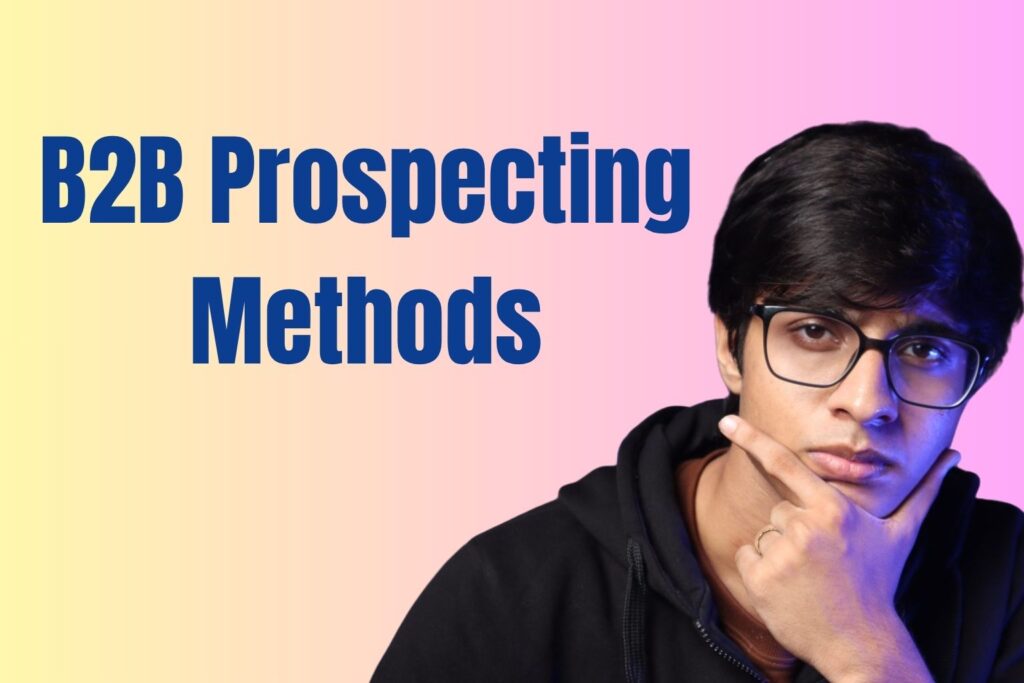
The Complete Guide to B2B Prospecting Methods That Drive Results in 2025
Table of Contents
The B2B sales landscape has transformed dramatically. With marketing budgets slashed by up to 50% in 2024, every prospecting effort must deliver maximum impact. The days of spray-and-pray tactics are over. Today’s successful sales teams use strategic, data-driven prospecting methods that cut through the noise and connect with decision-makers who are ready to buy.
But here’s the challenge: 71% of B2B leads are never contacted by a salesperson. This massive gap represents an enormous opportunity for teams that get prospecting right.
In this guide, you’ll discover the 10 most effective B2B prospecting methods that are driving results in 2025. These aren’t theoretical concepts – they’re proven strategies backed by data and used by top-performing sales teams worldwide.
10 Effective Techniques for B2B Prospecting You Must Know
Find Verified Data
Your prospecting success starts with one fundamental element: accurate, verified contact data. Poor data quality is the silent killer of sales productivity, causing bounced emails, failed calls, and damaged sender reputation.
The numbers tell the story. Companies using verified, phone-verified mobile numbers see connect rates increase by 300%. Meanwhile, those relying on outdated databases waste countless hours on dead-end outreach.
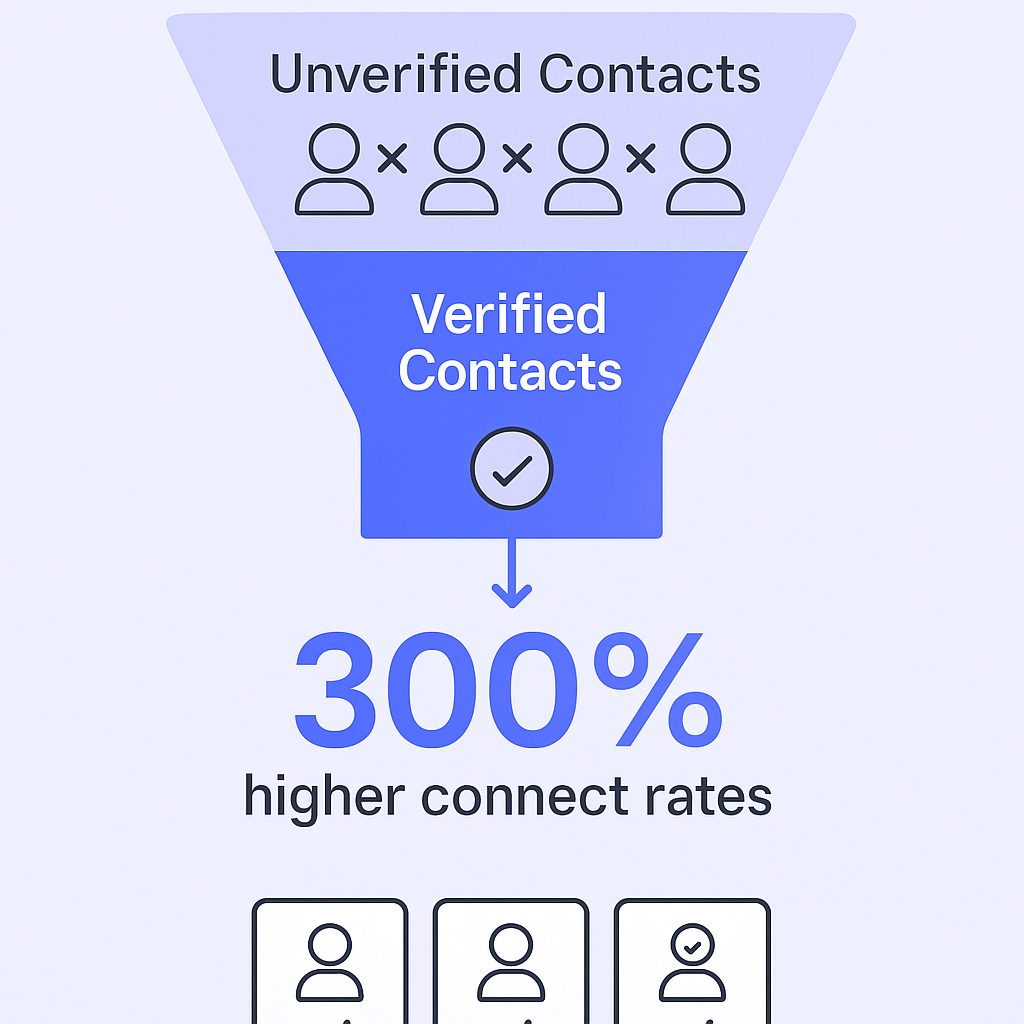
Here’s what verified data includes:
- Phone-verified mobile numbers for higher connection rates
- Recently validated email addresses to avoid bounces
- Firmographic data like company size, industry, and revenue
- Technographic insights showing what tools prospects currently use
The key is working with data providers that use real-time verification. Look for platforms that employ human verification teams to create premium datasets with the highest accuracy rates.
When you’re armed with verified data, every call connects, every email lands in the right inbox, and every LinkedIn message reaches an active decision-maker. This foundation sets everything else up for success.
🎯 LinkedIn Finds Verified Prospects Faster
Our targeting engine delivers phone-verified decision-makers ready for outreach conversations
Send Personalized Emails
Generic emails die in the inbox. Personalized messages deliver 6x more transactions and boost open rates by 29%. But personalization goes far beyond inserting {FirstName} – it requires genuine research and relevance.
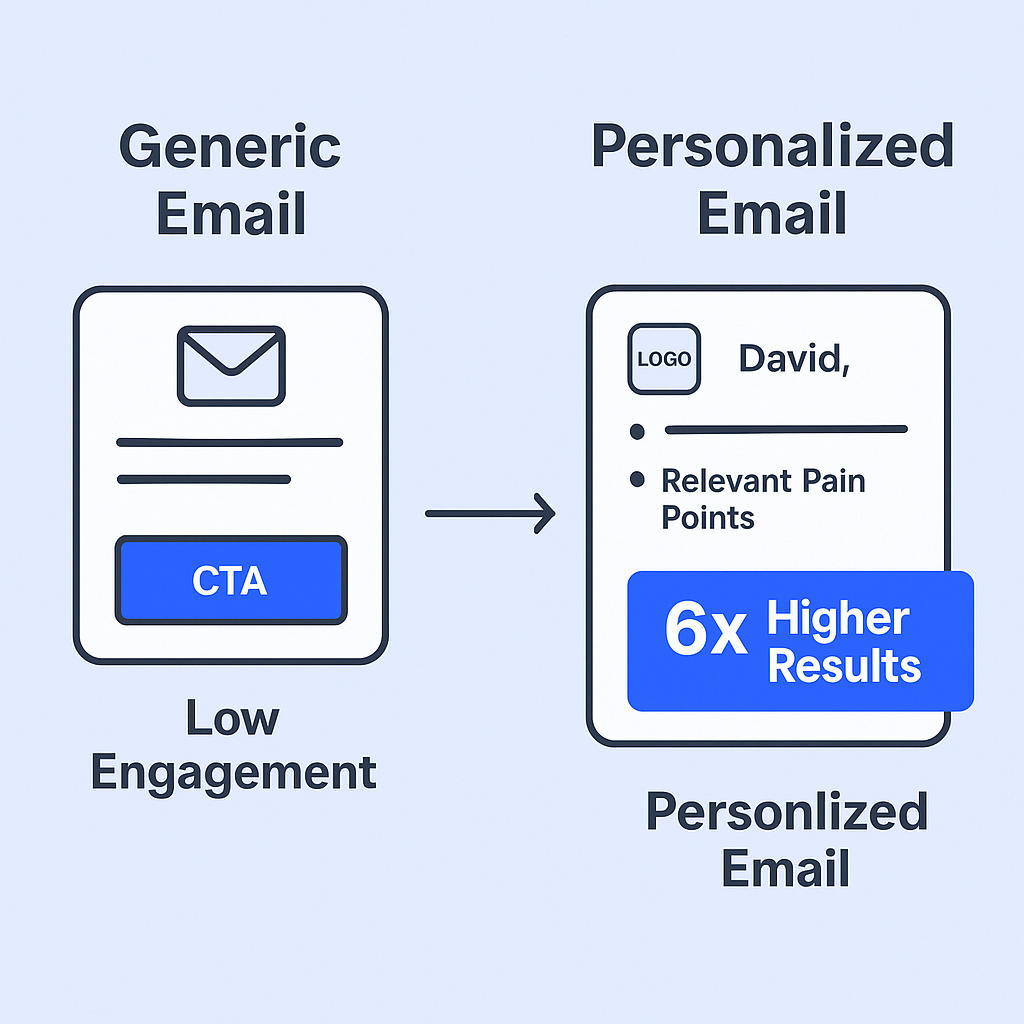
Eight out of ten buyers prefer email contact from sellers, making it your highest-ROI channel when executed correctly. The secret is demonstrating that you’ve done your homework.
Next-level personalization includes:
- Referencing specific company events or announcements
- Mentioning shared connections or mutual interests
- Addressing their likely pain points based on their role
- Sharing relevant case studies from similar companies
Your email structure should follow this proven formula:
- Subject line: Personalized and curiosity-driven (50% higher open rates)
- Opening: Reference something specific about them or their company
- Value proposition: Connect their pain to your solution
- Call-to-action: Low-friction request for a brief conversation
Keep emails scannable with short paragraphs and bullet points. Most recipients skim before deciding whether to engage, so make your value proposition obvious within seconds.
The goal isn’t to sell in the email – it’s to earn a conversation. Focus on starting a dialogue, not closing a deal.
💬 Automate Personalized LinkedIn Outreach
Our campaign design creates sequences that feel human while scaling to hundreds daily
Ask for Referrals
Referrals are the gold standard of B2B leads. 93% of B2B buyers trust word-of-mouth recommendations over any other form of marketing. Referred customers convert 5x more often, stay 18% more loyal, and deliver 16% higher lifetime value.
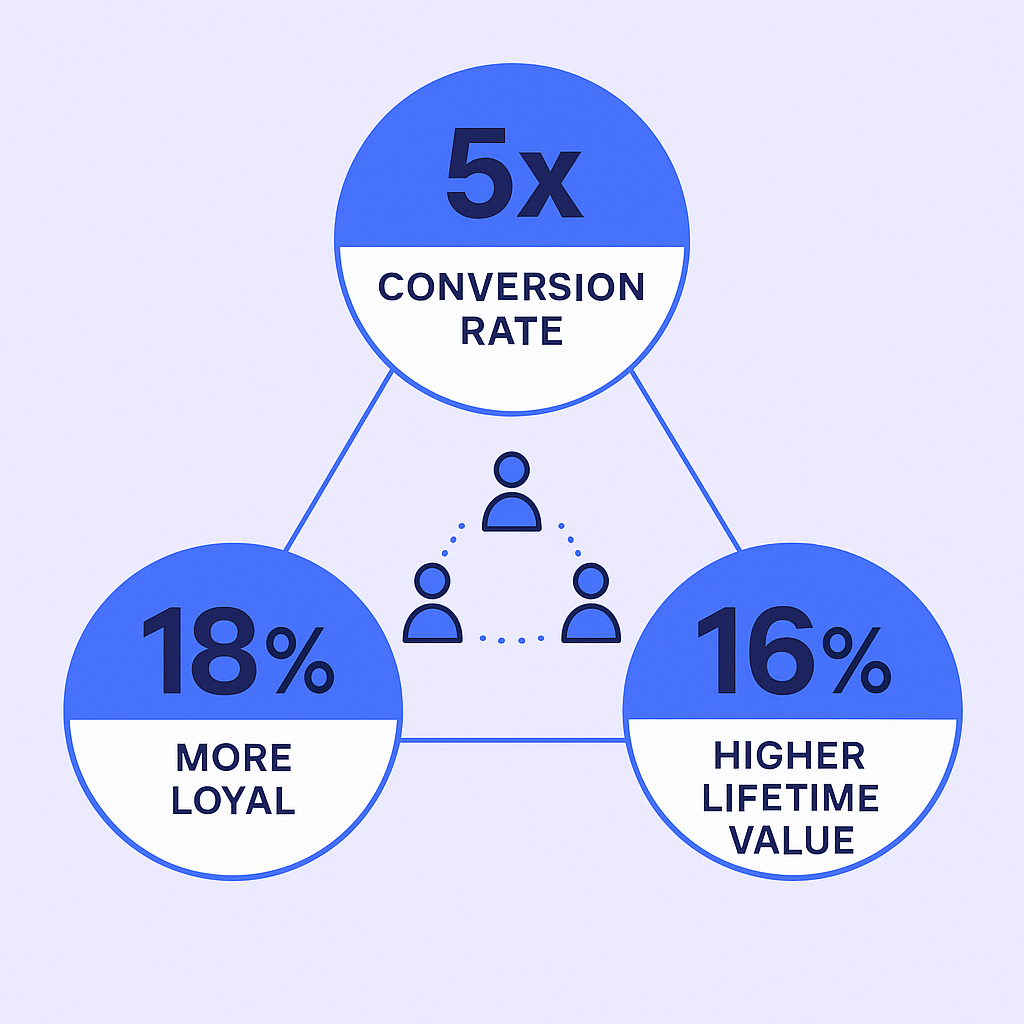
Yet most companies wait for referrals to happen organically. The top performers make referrals systematic and proactive.
The referral opportunity moments:
- Right after a successful project completion
- Following a positive customer review or testimonial
- During renewal conversations with happy clients
- After resolving a customer challenge effectively
Make referrals effortless:
- Create an “intro bounty board” with your top target accounts
- Offer meaningful incentives (10% of first-year contract value)
- Provide pre-written email templates they can customize
- Follow up consistently but respectfully
The most effective referral programs generate 5-15% participation rates from active users, with conversion rates exceeding 25% from introduction to paying customer.
Chatbots for Instant Interaction
AI-powered chatbots have evolved from simple FAQ tools into sophisticated lead qualification machines. They work 24/7, handle 79% of routine questions, and can save up to 30% on lead qualification costs.
Modern chatbots don’t just collect contact information – they qualify prospects using frameworks like BANT (Budget, Authority, Need, Timeline) and route high-intent visitors directly to your sales team.
Strategic chatbot deployment:
- Intent-based triggers: Different messages for pricing page visitors versus blog readers
- Qualifying questions: Company size, role, timeline, and budget parameters
- Calendar integration: Qualified leads book meetings instantly
- CRM synchronization: Automatic lead creation and assignment
The key is matching the chatbot experience to visitor intent. Someone researching pricing deserves a more direct, sales-oriented interaction than someone reading educational content.
Results speak volumes: Using chatbots to promote consideration-stage content increases subscription rates by up to 4x.
Multichannel Outreach Strategy
Single-channel outreach is leaving money on the table. The most successful prospecting campaigns use coordinated touchpoints across multiple channels, creating a cohesive conversation that increases connection probability.
A strategic multichannel sequence might include:
- Day 1: Personalized LinkedIn connection request
- Day 2: Targeted email with specific value proposition
- Day 4: Follow-up call referencing previous touchpoints
- Day 7: LinkedIn message sharing relevant industry insight
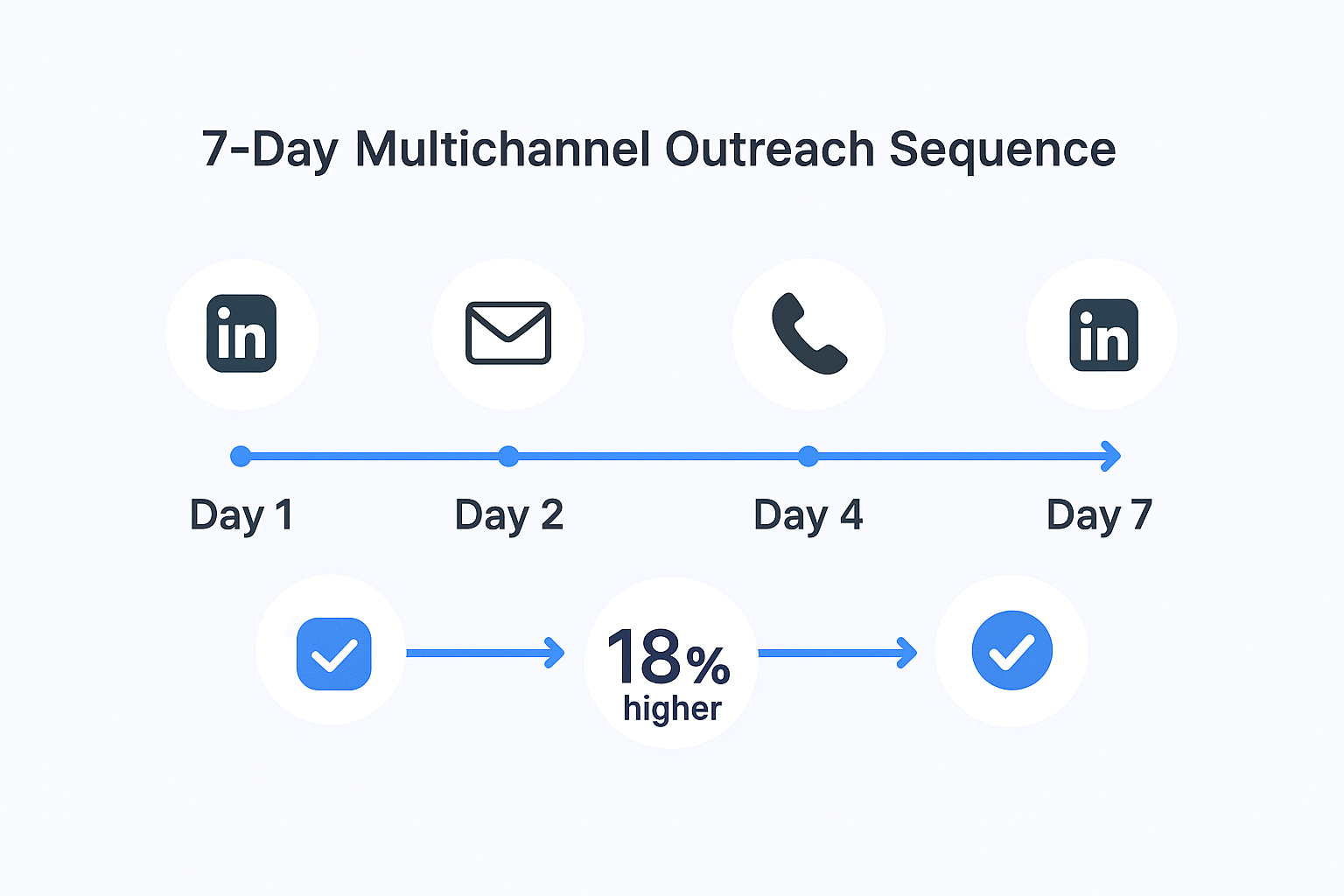
The magic happens in the orchestration. Each touchpoint should reference and build upon previous interactions, creating continuity rather than repetition.
Multichannel best practices:
- Track engagement across all channels
- Adjust timing based on response patterns
- Maintain consistent messaging and value proposition
- Use automation for workflow, not for generic content
This approach acknowledges that different prospects prefer different communication channels. Some respond to emails, others prefer calls, and many engage most actively on LinkedIn.
🚀 LinkedIn Outbound Beats Multichannel Chaos
Single platform targeting, messaging, and booking—no scattered tools or lost conversations
Customer Relationship Management (CRM) Optimization
Your CRM isn’t just a database – it’s the central nervous system of your sales operation. 91% of companies with 10+ employees use CRM, and those that optimize it properly are 86% more likely to exceed sales goals.
Well-implemented CRMs increase sales revenue by 29%, boost productivity by 34%, and shorten sales cycles by 8-14 days. But simply having a CRM isn’t enough – it must be continuously optimized.
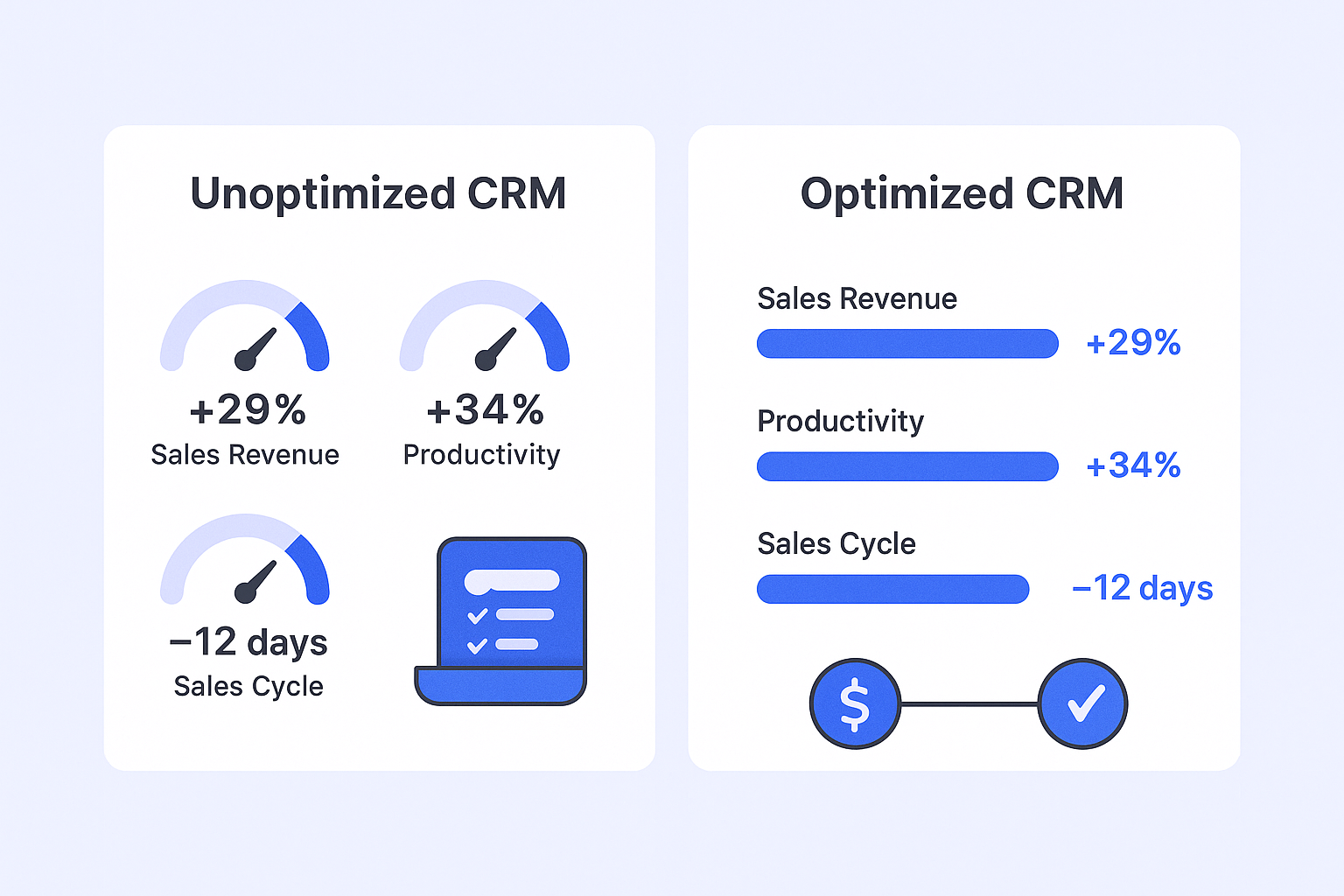
CRM optimization essentials:
- Clean data: Regular de-duplication and standardization
- Custom pipeline stages: Mirror your actual sales process
- Automation workflows: Eliminate repetitive administrative tasks
- User adoption: Comprehensive training and documentation
The biggest CRM challenge is user adoption, with 25% of businesses citing it as their top hurdle. Success requires making the system intuitive, valuable, and integral to daily workflows.
Automation saves 5-10 hours per employee weekly when implemented correctly. Focus on automating lead assignment, follow-up reminders, and activity logging to free up time for actual selling.
Cross-Selling and Upselling Campaigns
Your existing customers are your highest-probability prospects. The likelihood of selling to existing customers ranges from 60-70%, compared to just 5-20% for new prospects. These campaigns can drive 10-30% of total revenue and increase customer lifetime value by 20-40%.
Upselling strategies:
- Showcase premium features within the product interface
- Implement “reverse trials” where users experience premium benefits temporarily
- Use usage analytics to identify customers ready for more capacity
- Time upgrades around contract renewals or success milestones
Cross-selling approaches:
- Analyze which products naturally complement each other
- Create “frequently bought together” campaigns
- Leverage customer success data to identify expansion opportunities
- Focus on solutions that increase customer stickiness
The key is timing these conversations around positive experiences and demonstrated value. A customer who just achieved a major win with your current solution is primed to invest in additional capabilities.
Competitor Analysis for Targeting Gaps
Understanding your competitive landscape reveals untapped opportunities. By analyzing where competitors succeed and fail, you can identify prospects who might be dissatisfied with current solutions or unaware of better alternatives.
Competitive intelligence gathering:
- Monitor competitor job postings for expansion signals
- Track their customer wins and losses through industry publications
- Analyze their pricing changes and product announcements
- Identify accounts they’re targeting but haven’t won yet
Gap targeting strategies:
- Focus on prospects using inferior competitive solutions
- Target companies in industries where competitors struggle
- Address specific feature gaps that competitors can’t solve
- Time outreach around competitor contract renewals
Tools like sales intelligence platforms can alert you when prospects engage with competitor content or when competitive contracts come up for renewal.
Dynamic Retargeting Campaigns
Dynamic retargeting keeps your solution top-of-mind with high-intent prospects throughout long B2B sales cycles. This strategy serves personalized ads based on specific website interactions, nurturing prospects until they’re ready to engage.
Retargeting triggers:
- Pricing page visits (high intent)
- Product demo requests (very high intent)
- Case study downloads (research phase)
- Multiple blog post views (awareness building)
The best practice is serving value-added content rather than generic sales messages. Show prospects relevant case studies, industry insights, or educational resources that address their demonstrated interests.
Platform priorities:
- LinkedIn: Where B2B decision-makers spend professional time
- Google Display: Broad reach across business websites
- Industry publications: Context-relevant placements
Dynamic retargeting works because B2B purchases involve multiple stakeholders and extended decision timelines. Staying visible during this process significantly increases conversion probability.
⚡ Stop Waiting for Retargeting Clicks
LinkedIn outbound puts your message directly in decision-makers' inboxes with instant engagement
7-day Free Trial |No Credit Card Needed.
Go for the Best B2B Prospecting Tool – GrowMeOrganic
While multiple tools claim to solve prospecting challenges, the most successful teams choose platforms that combine accurate data with powerful workflow automation.
Essential platform capabilities:
- Verified contact database: Phone-verified mobile numbers and validated emails
- Advanced filtering: Firmographic, technographic, and intent data
- Multi-channel sequences: Email, calling, and social outreach coordination
- CRM integration: Seamless data flow and activity tracking
- Analytics dashboard: Performance tracking and optimization insights
The right tool eliminates manual research, ensures message delivery, and provides insights for continuous improvement. It should feel like an extension of your sales process, not a separate system requiring additional work.
Look for platforms offering trial periods or freemium access. The best tools prove their value immediately through higher connect rates and more qualified conversations.
How to Measure B2B Prospecting Performance?
Measuring prospecting performance requires tracking both activity metrics and business outcomes. The most successful teams focus on metrics that directly correlate with revenue generation.
Key Performance Indicators:
Activity Metrics:
- Calls made per day/week
- Emails sent and opened
- LinkedIn connections and responses
- Meetings booked per rep
Quality Metrics:
- Connect rate (calls answered)
- Email response rate
- Meeting show-up rate
- Lead-to-opportunity conversion
Business Outcomes:
- Pipeline generated per rep
- Average deal size from prospected leads
- Time from prospect to close
- Customer acquisition cost (CAC)
Advanced Analytics:
- Channel performance comparison
- Message/script performance analysis
- Ideal customer profile refinement
- Seasonal trend identification
The most valuable metric is cost per qualified opportunity. This measures the total investment (salary, tools, time) required to generate pipeline that actually converts to revenue.
Regular performance reviews should identify both top performers and improvement opportunities. The best practices from high-performing reps can be documented and scaled across the entire team.
Conclusion
B2B prospecting success in 2025 requires a strategic, data-driven approach that combines proven methods with modern technology. The ten techniques outlined here aren’t just tactics – they’re the foundation of a systematic approach to pipeline generation.
The key is starting with verified data, personalizing every interaction, and maintaining consistency across multiple channels. Whether you’re making cold calls, sending emails, or engaging on LinkedIn, the principles remain the same: research thoroughly, provide genuine value, and focus on starting conversations rather than closing deals.
Remember that prospecting is a numbers game, but it’s also a quality game. The teams that win are those who can combine high activity levels with high personalization standards, supported by the right tools and processes.
Start implementing these methods systematically. Test different approaches, measure results, and continuously refine your strategy based on what works for your specific market and ideal customer profile.
FAQs
What is a B2B prospecting tool?
Is there any difference between a lead and a prospect?

Skip Manual Prospecting Forever
Our LinkedIn outbound engine finds, engages, and converts decision-makers automatically

